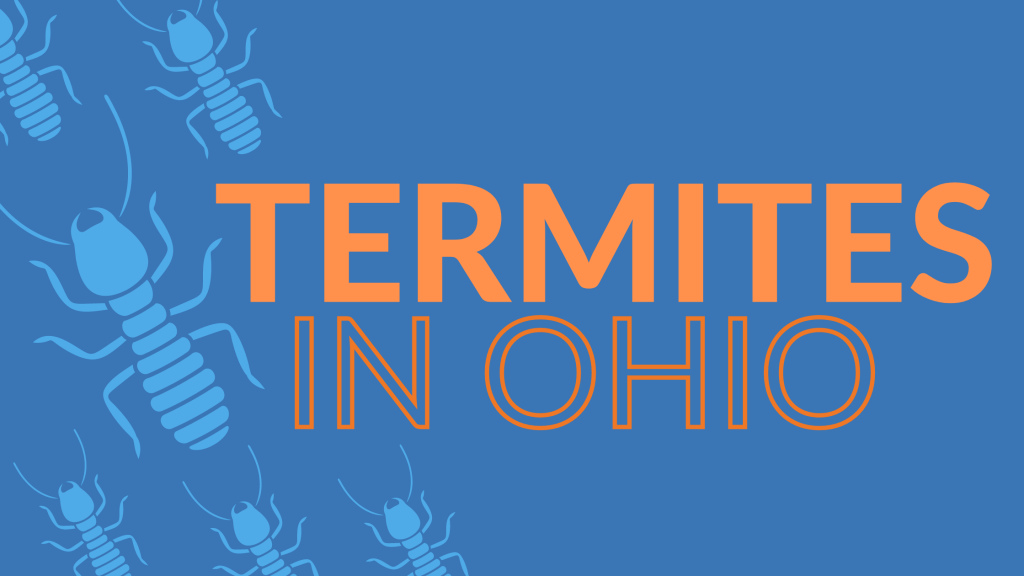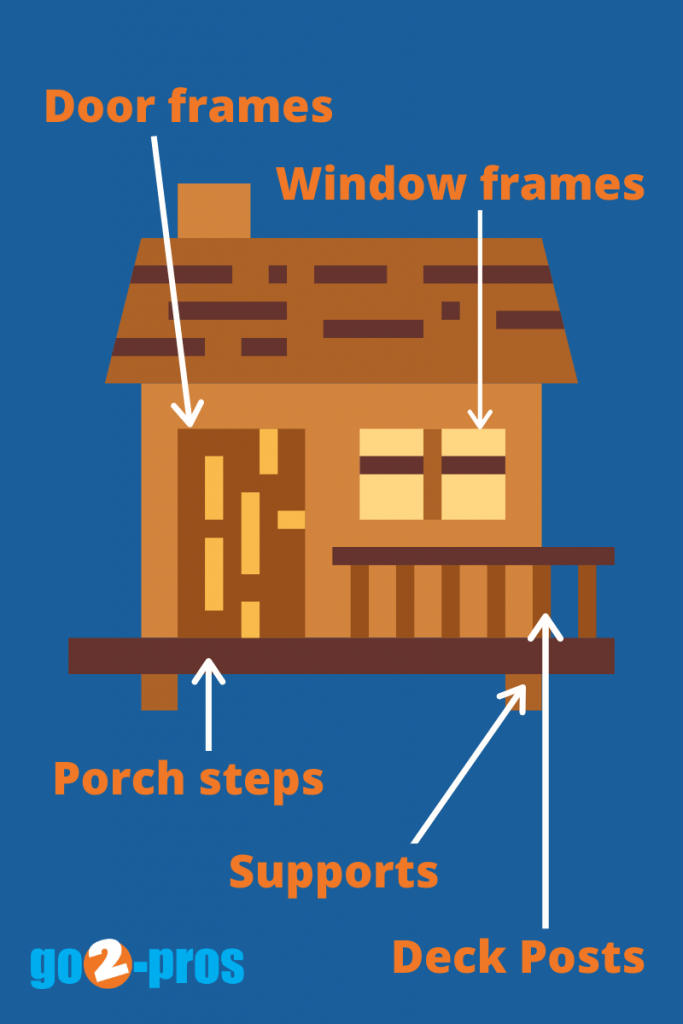The Complete Guide To Termites In Ohio

Spring showers don’t just bring May flowers, they also bring out termites. Here are a few things to know about termites in Ohio. Plus what you can do to prevent them and protect your home from serious and costly structural damage.
Types of Termites
There are various different types of termites throughout the United States. The most prominent species in the Greater Dayton region of Ohio are subterranean termites and drywood termites.
Subterranean Termites
Subterranean termites are found in almost every state throughout the United States. They usually live in underground colonies or in moist secluded areas above ground. Using moisture, such as that from spring rainfall, they build distinctive mud tunnels that allow them access to food sources and protect them from open air. Despite their tiny size, subterranean termites are the most destructive species of termite.
Drywood Termites
Drywood termites are less likely to be in your home. They’re typically found outside in wood that has dried naturally, such as dead or fallen trees. They can be drawn to wood that has been treated to prevent moisture. Like wood used inside homes, such as hardwood flooring. The damage done by these types of termites is much less severe. Drywood termite colonies are typically smaller than subterranean termites so deterioration happens at a slower rate.
How Do You Get Termites In Your Home?
Termites are tiny. Therefore they can gain access into your home via gaps. Cracks only need to be as small as 1/32 of an inch wide. To put it into perspective – that’s 2x narrower than a piece of paper!
Despite some misconceptions, termites aren’t actually drawn to wood itself. Instead, they feed on cellulose. Cellulose can be found in things like paper, cardboard, wood, and other building materials. All things that are in high supply in and around most Ohio homes!
Subterranean Termite Entry
Since subterranean termites thrive below ground, they usually enter homes under or directly at ground level. Their preferred type of entry points consist of:
- Porch steps
- Deck posts
- Supports
- Door or window frames
- Holes in concrete blocks, brick and mortar, or foundation

Subterranean termites can get creative when it comes to getting into direct contact with food sources. They’re known to build mud tubes from the soil up to protect themselves from dehydration. Which means they can gain access into your home from almost anywhere.
Drywood Termite Entry
If you notice a termite with wings flying about, you’ve likely encountered a type of drywood termite called a “swarmer”. Swarmers find crevices where they dig in, seal themselves inside a little nest to produce eggs and form a colony. If not immediately detected and treated, these colonies can grow and cause serious damage. Since these types of termites don’t need direct contact with soil to spread, they can reach a lot more spots around your home. Because of this ability, it’s best to invest in preventative measures against drywood termites as soon as you can.
Signs You Have Termites In Your Home
It’s not always possible for an untrained eye to notice the signs of a termite infestation. However, there are some things that will be apparent to you as a homeowner. If you see any of the following, it may be time to contact a pest control professional. A trained eye can determine the extent of the problem and provide recommendation for treatment, if needed:
- Mud tubes (apparent evidence of subterranean termites trying to enter your home)
- Soft or hollow sounding wood (tap on wood structures to see if it produces sound. The more damaged the wood is, the more hollow it will sound)
- Darkening or blistering wood structures
- Weird looking areas of paint or the appearance of sunken areas on walls. (Tunneling from termites can distort wood surfaces, which may result in uneven walls and bubbling paint)
- Piles of what looks like sawdust (wood colored, pellet-like droppings where termites have nested and eaten)
- Flying termites (known as swarmers aka reproductive termites)
- Shed wings (after nesting swarmers will shed their wings that will look like small heaps of fish scales)
How To Prevent Termites
There are a number of things you can do to be proactive about termite prevention to avoid colony establishment and prevent extensive damage.
- Eliminate wood that has direct contact with soil. Earth-to-wood contact (especially if the wood is attached to your home), allows termites to have easy access to your home for food, moisture, and shelter. Things like wood siding, door frames, window frames, and other wood easements should be at least 6” above ground.
- Don’t let moisture accumulate around your foundation or crawl space. Water should be properly diverted away from your home by using functioning gutters, downspouts, and splash blocks. Leaky outdoor faucets, pipes, and air conditioners should be immediately repaired.
- Don’t store firewood, lumber, cardboard boxes, newspapers, and other wood-based materials too close to the outside of your home. Such things provide termites an easy source of food and hidden entry into your home.
- Use mulch sparingly around the outside perimeter of your home. While you may already have mulch outside for aesthetic reasons or to help with plant growth, improper usage can cause termite problems because of the moisture-retaining properties and insulation mulch provides.
- Consider having your home preventatively treated for termites by a professional. While the methods above can help make your home less attractive to termites, you could still be at risk for an infestation despite your hardest efforts. The best way to protect your home is to use a preventative treatment. The investment will be well worth the costs in the long-run.
What To Do If You Suspect You Have Termites
Even if you just find a single termite in your home, you may not think it’s that menacing. However, that termite likely stems from an entire colony that wreaks havoc on your home, causing serious and costly structural damage. If you suspect you have termites or want more information about preventative treatment to protect your property, contact go2-pros pest control.
